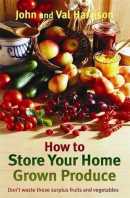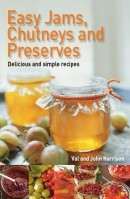This basic pastry making guide and tips applies to all types of pastry. It will help those who have never made pastry before and a few tips that will help even experienced cooks. For details of how to make specific types of pastry, see the articles listed at the end.

Pastry Making Guide & Tips
Pastry Ingredients
Pastry Flour:
Use good quality flour for pastry making. It should be quite dry and it is necessary to always sieve before use to remove any lumps and introduce air. This helps to lighten the pastry. Self-raising flour can be used for short crust or suet pastry but better results are obtained if plain flour is used for richer pastries.
Fats in Pastry Making:
The fats with the best flavour and shortening qualities for pastries are generally butter or lard, which makes the pastry rich and crisp. Margarine can be used to replace butter and there are several “hard” block vegetable fats/white margarine that can be used in place of lard.
Stork is probably the best known to older cooks as a replacement for butter and hard baking Stork does work fairly well in pastry. Trex and Cookeen are hard vegetable fats low in cholesterol but both contain palm oil.
There are serious concerns over the ethics of production of palm oils as the growth in plantations has resulted in forests being replaced with monoculture and the endangerment of species such as the orangutan. However, the manufacturers claim their products are made with ethically sourced oils and the use in domestic cooking is but a small amount of total usage of palm oils.
Salt:
A little salt is advisable in pastry to improve the flavour although you’ll probably use a lot less salt than the amount in commercial pastry. Use a fine salt rather than coarse ground salts or flakes.
Water:
Water is the most suitable mixing liquid and should and cold and fresh. For rich pastries a little lemon juice is often used to help make the pastry crisper.
Eggs:
If the recipe calls for egg or egg yolk, remove the eggs from the fridge a couple of hours beforehand to allow them to come to room temperature.
Note on Amount of Pastry
When a recipe calls for a certain weight of pastry, with older cook books this weight often refers to the amount of flour used and not to the total amount of pastry. For example, if an old recipe says you need 4 oz (112 g) Short Crust Pastry, it means that you start off with 4 oz (112 g) flour and then add all the other ingredients. However, modern recipe writers do not generally follow this convention.
When buying pastry however, you should buy the weight the recipe calls for.
General Pastry Making Tips
- All ingredients and utensils should be kept as cool as possible. Your hands can be cooled by allowing cold water to run over the wrists.
- The pastry should be handled as little and lightly as possible.
- Shortcrust pastry can be made very quickly in a food processor.
- Add only sufficient water to mix evenly to a pliable dough. Too much water will make the pastry hard. Streakiness in the pastry can be avoided if all the water needed is added at once.
- Knead lightly with the fingertips drawing the edges of dough towards the centre, turning the pastry on a lightly floured board.
- Roll out with short sharp strokes of the rolling pin away from you. Turn the pastry not the rolling pin.
- Some rich pastries are improved if allowed to cool in the fridge and relax between rolling.
- You can make pastry before needed and keep it in the fridge, wrapped in cling film, until needed.
- Collect all equipment needed and weigh up the ingredients before starting the pastry.
- Most pastry freezes well, baked or unbaked, except Hot Water Pastry and Suet Pastry. Making a double batch and freezing half can save a lot of your time.
Choice & Preparation of Cooking Utensils
Metal plates or baking tins will give the greatest degree of under browning. This degree of under browning decreases with the use of plates made of thin china, fireproof glass, thick china or earthenware, in that order. The under browning may be improved if plates used for cooking plate tarts etc have absolutely flat bases and are stood upon a baking tray for cooking. The baking tray should be put in the position on the shelf whilst the oven is heating up.
Baking sheets or other utensils used for cooking the less rich pastries such as short crust, may be either lightly greased or left entirely un-greased. A flan ring and the baking sheet on which a flan is cooked should be well greased to prevent the pastry sticking.
Utensils used for baking pastries made with flaky, rough puff, or puff pastry should not be greased. For best results rinse or sprinkle the utensil with cold water before the pastries are put on it.
More Pastry Making Guides, Tips & Information
- Basic Guide to How to Make Pastry – Tips for Better Pastry Making
- Fleur Pastry Recipe – How to Make Fleur Pastry
- Filo Pastry Recipe – How to Make Filo Pastry
- Cheese Pastry Recipe – How to Make Cheese Pastry
- Choux Pastry Recipe – How to Make Choux Pastry
- Flaky Pastry Recipe – How to Make Flaky Pastry
- Hot Water Pastry Recipe – How to Make Hot Water Pastry
- Lemon Shortcrust Pastry Recipe – How to Make Lemon Shortcrust Pastry
- Nut Pastry Recipe – How to Make Nut Shortcrust Pastry
- Potato Pastry Recipe – How to Make Potato Pastry
- Puff Pastry Recipe – How to Make Puff Pastry
- Rough Puff Pastry Recipe – How to Make Rough Puff Pastry
- Shortcrust Pastry Recipe – How to Make Shortcrust Pastry
- Suet Pastry Recipe – How to Make Suet Pastry


